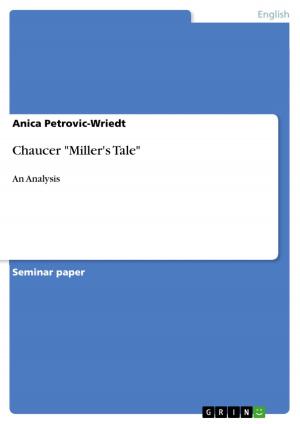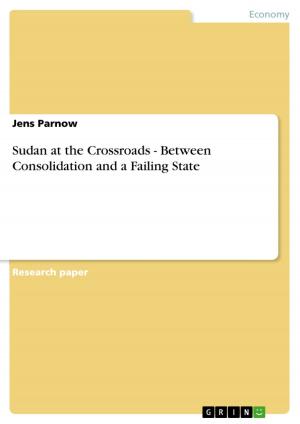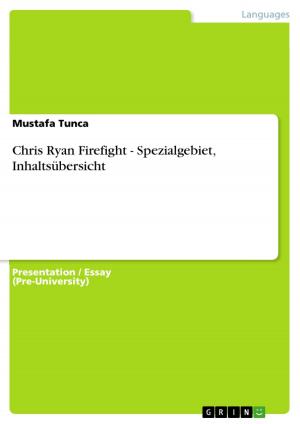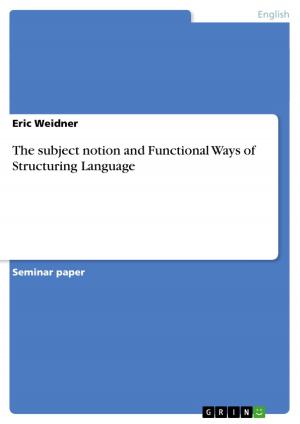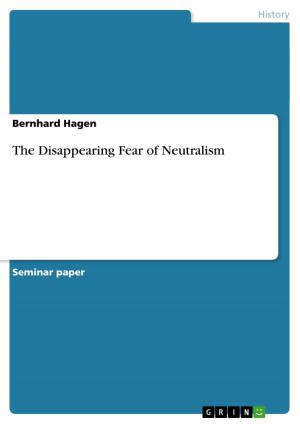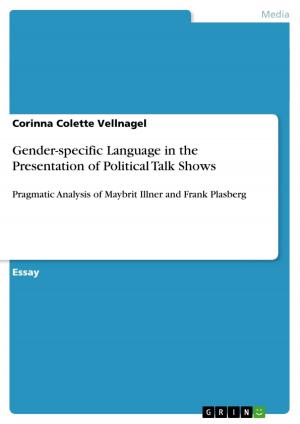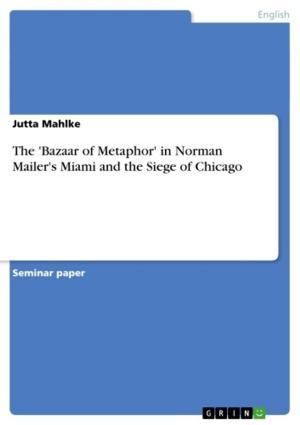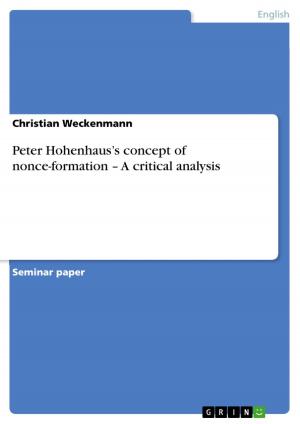Culture Clash - American Expatriates in Europe in: Nathaniel Hawthorne's The Marble Faun and Henry James's The Portrait of a Lady
American Expatriates in Europe in: Nathaniel Hawthorne's The Marble Faun and Henry James's The Portrait of a Lady
Nonfiction, Entertainment, Drama, Anthologies| Author: | Tonia Fondermann | ISBN: | 9783638381468 |
| Publisher: | GRIN Publishing | Publication: | May 28, 2005 |
| Imprint: | GRIN Publishing | Language: | English |
| Author: | Tonia Fondermann |
| ISBN: | 9783638381468 |
| Publisher: | GRIN Publishing |
| Publication: | May 28, 2005 |
| Imprint: | GRIN Publishing |
| Language: | English |
Bachelor Thesis from the year 2004 in the subject American Studies - Literature, grade: 1,0, Ruhr-University of Bochum, 24 entries in the bibliography, language: English, abstract: When Henry James first travelled to Europe on his own in 1869, for the purpose of improving his education and his health, he was considerably young. With twenty six years of age he was independent of any family restrictions and could freely enjoy the intellectual life of Europe's metropolises. Even though he was already determined to become a writer it was in fact the European experience that launched his career and supplied him with ideas throughout his life (Wright 199). Nathaniel Hawthorne, in comparison, was nearly fifty years old when the opportunity to go to Europe was offered to him. In 1853 he left for Liverpool with his family to take over the office as American consul. He was already an established writer back then, having chiefly used New England settings for the composition of his stories. During the nineteenth century journeys through Europe became increasingly popular with Americans. Travelling the Old World belonged to the educational program for young men of the upper classes. By the 1850s the European experience was also affordable for the middle classes thus giving way to the phenomenon of commercial tourism. Accompanied by this movement was the growing popularity of travel literature by American writers. Among those who returned and wrote fiction or essays inspired by their journeys were Margaret Fuller, James Fenimore Cooper, and Washington Irving, to name but a few. So, both Hawthorne and James followed an American literary tradition. Europe constituted in these days an inseparable part of the American consciousness. Political independence had long been achieved but the fascination with and the orientation towards the 'mother' continent in the east failed to cease. Everything rendered culturally or artistically important was an European import or imitation, no matter if in architecture, painting, or dressing style. This dependence resulted in ambivalent feelings. Great admiration mixed with feelings of inferiority, reverence with repudiation. The cultural density and the historical richness of metropolises like London, Paris, and Rome attracted thousands of American tourists each year. At the same time Americans were shocked by the - at least from an American point of view - obvious moral decadence of the Europeans. These circumstances provoked James and Hawthorne into dealing with themselves as Americans in Europe, with their emotions, opinions, and prejudices, experiences which were fruitful for their creative outpouring. [...]
Bachelor Thesis from the year 2004 in the subject American Studies - Literature, grade: 1,0, Ruhr-University of Bochum, 24 entries in the bibliography, language: English, abstract: When Henry James first travelled to Europe on his own in 1869, for the purpose of improving his education and his health, he was considerably young. With twenty six years of age he was independent of any family restrictions and could freely enjoy the intellectual life of Europe's metropolises. Even though he was already determined to become a writer it was in fact the European experience that launched his career and supplied him with ideas throughout his life (Wright 199). Nathaniel Hawthorne, in comparison, was nearly fifty years old when the opportunity to go to Europe was offered to him. In 1853 he left for Liverpool with his family to take over the office as American consul. He was already an established writer back then, having chiefly used New England settings for the composition of his stories. During the nineteenth century journeys through Europe became increasingly popular with Americans. Travelling the Old World belonged to the educational program for young men of the upper classes. By the 1850s the European experience was also affordable for the middle classes thus giving way to the phenomenon of commercial tourism. Accompanied by this movement was the growing popularity of travel literature by American writers. Among those who returned and wrote fiction or essays inspired by their journeys were Margaret Fuller, James Fenimore Cooper, and Washington Irving, to name but a few. So, both Hawthorne and James followed an American literary tradition. Europe constituted in these days an inseparable part of the American consciousness. Political independence had long been achieved but the fascination with and the orientation towards the 'mother' continent in the east failed to cease. Everything rendered culturally or artistically important was an European import or imitation, no matter if in architecture, painting, or dressing style. This dependence resulted in ambivalent feelings. Great admiration mixed with feelings of inferiority, reverence with repudiation. The cultural density and the historical richness of metropolises like London, Paris, and Rome attracted thousands of American tourists each year. At the same time Americans were shocked by the - at least from an American point of view - obvious moral decadence of the Europeans. These circumstances provoked James and Hawthorne into dealing with themselves as Americans in Europe, with their emotions, opinions, and prejudices, experiences which were fruitful for their creative outpouring. [...]

